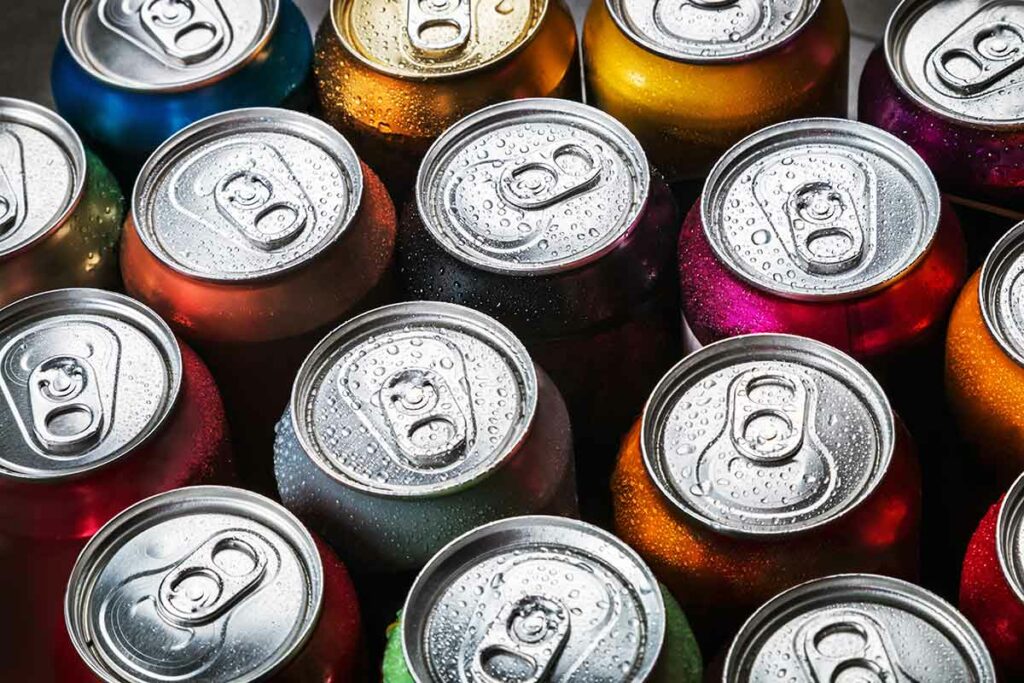Planning on ditching plastic? Bad news — it’s everywhere. It’s used to make disposable cutlery and food storage, convenient grocery bags, and those evil straws that everyone rallied against.
Plastic is used for other things, too. Think about the last time you visited the doctor for an annual checkup, because plastic revolutionized the healthcare industry. What is your vacuum made of? Most makeup wipes contain plastic, and oddly enough, so does chewing gum.
This material is great for a lot of reasons, but it is also a huge nuisance when it comes to the environment. That’s because the stuff never breaks down. As a non-biodegradable material, it just sticks around forever, building up in landfills and oceans. And scary enough, it’s apparently in the air now, too. We are breathing, drinking, and eating microplastics. These airborne microplastics are also being blown around the world, reaching even the most remote regions of the planet.
“People should be concerned about airborne microplastics. Firstly, because they will inhale it and it is very likely that this will have some health impacts,” atmospheric scientist Andres Stohl told The Guardian. “And secondly, because the atmosphere is a great distributor. It transports plastic particles to regions where we definitely don’t want to have them: agricultural fields, national parks, oceans, the Arctic, even Antarctica. Eventually, we will have extremely high concentrations of plastics everywhere.”
So What Do We Do?
As I said, plastic is everywhere. And to be completely honest, the plastic problem isn’t really going to be solved by consumers. It’s a poor waste management problem. In order to fix this mess, corporations need to be held accountable for their waste. They need to look to new technology creating more environmentally-friendly plastics from renewable materials, and it’s time companies move away from the linear take-make-waste model.
Of course, I’m not saying you shouldn’t try to reduce the number of plastics you use in your daily life. If you’re anything like me, I can’t just stand by and create more waste anyway, even if the bulk of the problem doesn’t come from consumers. My conscience just won’t let me!
However, reducing plastic is a lot harder than buying a few reusable tote bags. That’s because there is plastic hidden in so many places, making an entirely plastic-free life impossible. The best we can do is simply reduce our overall plastic usage in our daily lives – and support companies that are switching to more environmentally friendly practices.
Keep doing what you’re (hopefully!) already doing: opting for reusable shopping bags, investing in glass or metal food storage, and keeping your reusable coffee travel mug handy. But if you really want to get serious about reducing plastic, it’s time to look at all the hidden places that plastic is hiding.
Clothing

Check the label on the shirt you’re wearing right now. If it isn’t made of 100% all-natural fibers, like cotton or silk, guess what! It’s got plastic in it.
Synthetic fibers include polyester, nylon, spandex, acrylic, acetate, and rayon, among others. You might also see microfiber, which is extremely finely woven synthetic fibers. It’s almost guaranteed that anything stretchy in your wardrobe is at least partially composed of synthetic fibers.
Even if you never threw away a single clothing garment made with synthetic fibers, you’re still contributing to plastic pollution when you do your laundry. That’s because washing just one item made with synthetic materials will release as much as 7,000 little microfibers. They then travel with wastewater to treatment plants, eventually ending up as part of the microplastic pollution problem.
When buying new clothing, look for items made with natural fibers. Even items made out of a blend of natural and synthetic fibers shed less than fully-synthetic. Wash synthetic items less, and wash them on cool to help reduce the amount of shedding. Avoiding the temptations of fast fashion and purchasing second-hand are other great ways to reduce your closet’s environmental impact.
Paper Cups
When you purchase a latte at the local coffee shop, that paper cup is a little misleading. These disposable cups aren’t recyclable or biodegradable.
If cups were 100% paper, they wouldn’t hold your beverage for very long. Instead, they are coated with a polymer (aka plastic) lining to make them more waterproof. Because of the way the plastic lining adheres to the paper, these definitely go to the landfill.
The clear choice here is to invest in a reusable cup. Even reusable cups with plastic components are more eco-friendly than single-use cups but definitely look for metal and glass options. Some coffee shops will even give you a discount for bringing your own mug! Plus, reusable mugs are better insulated and usually more spill-proof.
Chewing Gum

Did you know that chewing gum is made with plastic? If you didn’t, don’t feel bad. Most people aren’t even aware.
What we think of as chewing gum used to be made with chicle, a substance that comes from certain trees. Gum brands that are still around, like Juicy Fruit, Wrigley’s Spearmint, and Chiclets, were made with chicle. Now, the name Chiclets makes a lot more sense! By the 1960s, synthetics were the base for chewing gum in the U.S. – and when I say synthetics, I mean like the synthetic rubber that’s used for car tire treads.
Okay, but why isn’t plastic listed in the ingredients? Each brand’s gum base is different, and they are trade secrets. But “gum base” is just a fancy way of saying polymers, plasticizers, and resins. That’s what makes gum chewy and stretchy, without ever breaking down. If you want to reduce your plastic footprint, it might be time to ditch the gum. Or, at least research brands that have started making plastic-free gum.
Tea Bags
Much like chewing gum, I’m willing to bet most people have no idea that there is plastic in their teabags. You’re drinking a hot cup of microplastics. I’m sorry, did I ruin your afternoon chai?
Food-grade plastics, like nylon and polypropylene terephthalate, are used to seal bags shut and help the bags keep their shape in hot water. Most are made of upwards of 25% plastic. Otherwise, your teabag would eventually dissolve into the hot water. To avoid it, there are some brands out there that do not use plastic in their teabags. And an even easier choice is to opt for loose leaf tea, instead!
Disposable Wipes

It doesn’t matter if they say they are flushable or not, most disposable wipes contain plastic. They are usually made with plastic resins like polypropylene and polyester. And even those disposable wipes that say they are biodegradable still come in a bunch of plastic packaging.
I know you don’t want to hear it, but it’s time to ditch the convenient makeup wipes, toilet wipes, and any other wet wipes you use. Start using reusable makeup pads made of natural fibers or even just good ol’ cotton washcloths.
Cigarettes
I won’t give you a lecture about why you shouldn’t be smoking cigarettes in the first place (but hey, you should quit!). But I will say that cigarette butts are so bad for the plastic pollution problem!
Filters aren’t made of cotton or paper. The cigarette’s filter is primarily plastic, made of cellulose acetate, and every pack of smokes contains 20 of them. That’s a lot of plastic that gets tossed out. In fact, cigarette butts are the most abundant form of plastic waste in the world.
Not smoking cigarettes is the obvious way to reduce your plastic waste. Even just cutting back can help a little. However, if quitting isn’t on the table, stop throwing butts on the ground and out of car windows. Always place them in a proper receptacle, so they can at least be collected with other waste.
Cans

I think most people are at least somewhat aware that the metal cans used for food are lined with plastic. For decades, Bisphenol A (BPA) was commonly used in those plastics. And while there aren’t really any requirements for companies to avoid BPA, most have phased it out on their own.
While we can say “hooray!” that there’s no BPA in about 90% of canned food, there is still plastic in there. It creates a barrier between the can and the food to prevent corrosion and metal leaching into the food.
What’s less commonly known is that there is also a thin plastic layer inside of drink cans, too, for the same reason. The aluminum cans are chemically treated with a plastic coating to prevent the drink from reacting with the can. Sodas and other beverages contain phosphoric and citric acids, which will corrode a can in no time.
Luckily, cans are still recyclable, despite the plastic film (unlike those paper cups). But if you’re trying to cut down on your plastics, it’s time to ditch the cans.
The obvious choice for canned foods is to purchase their fresh counterparts. Instead of canned green beans, it’s time to hit the produce aisle. Soda junkies might find it harder to use fewer plastics, but soda siphons are a great way to go. They use CO2 gas to carbonate beverages right in the comfort of your own kitchen.













